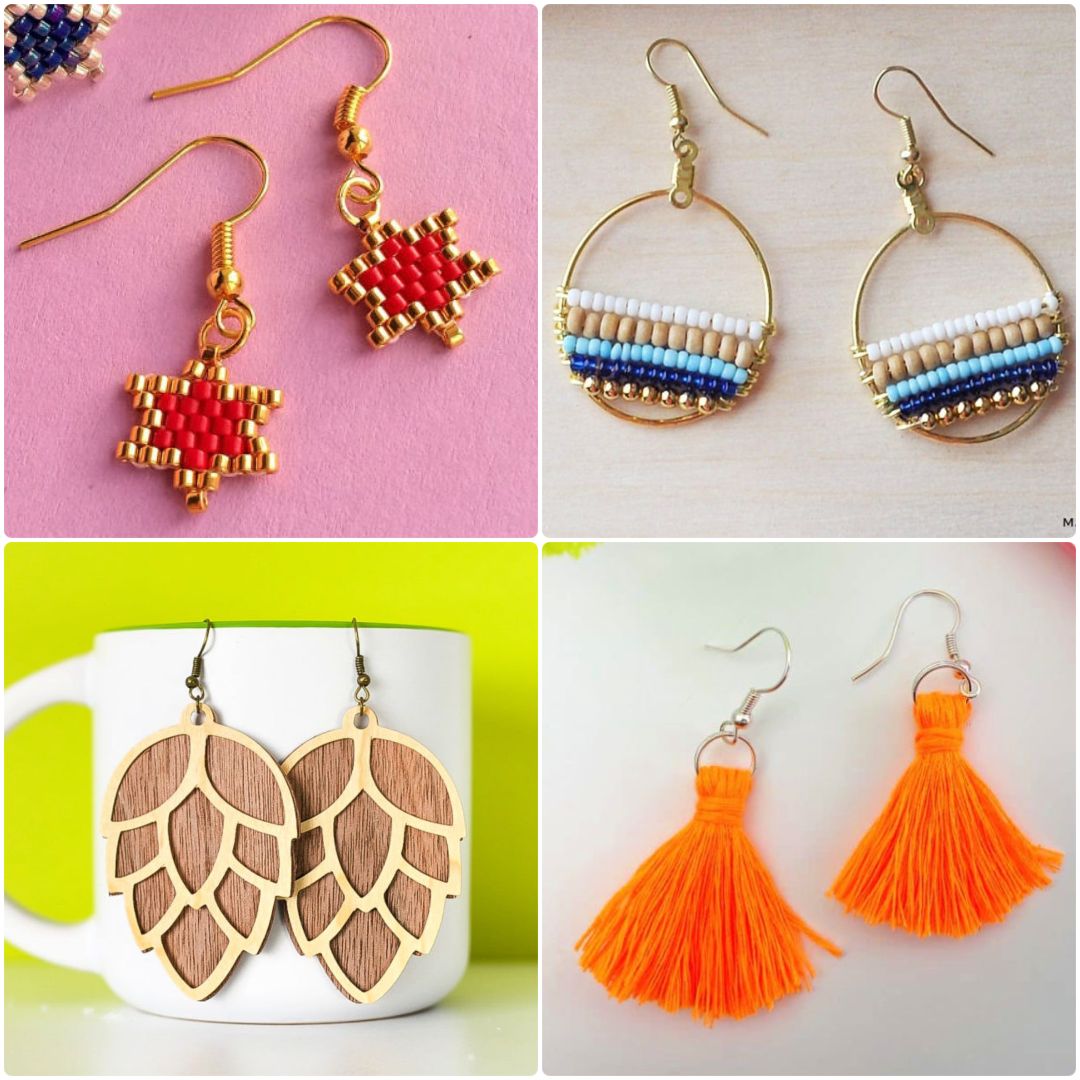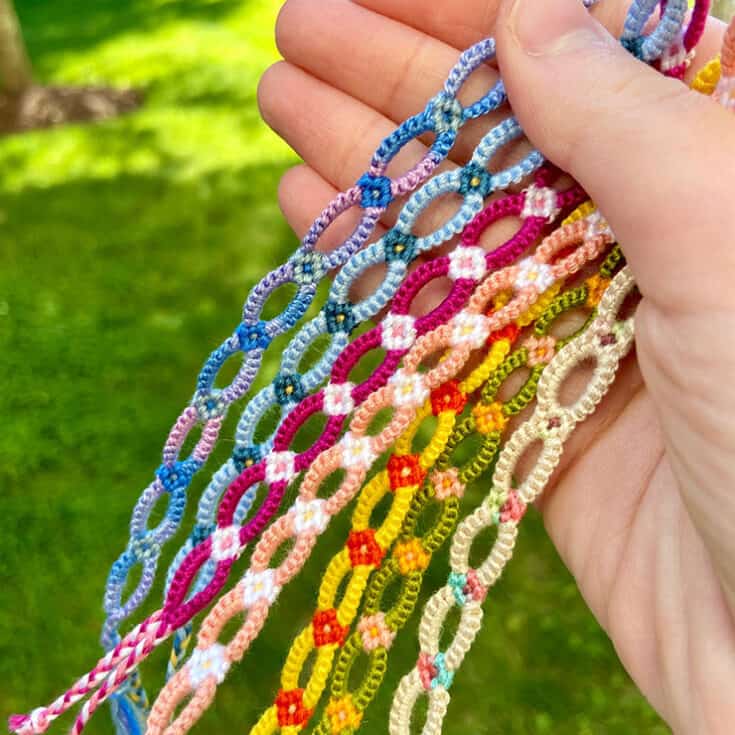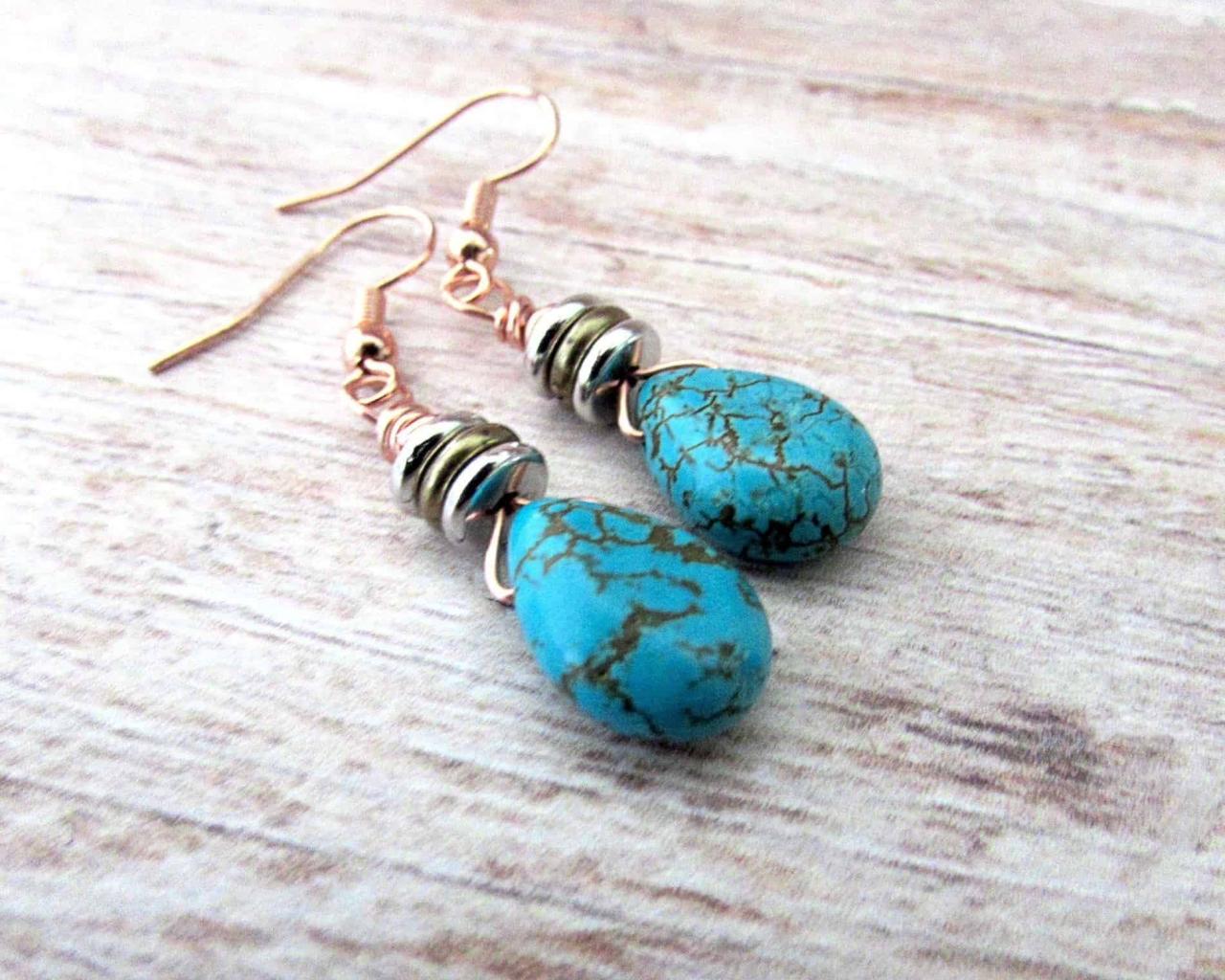Making earrings is a captivating craft that blends artistry, creativity, and technical skill. From the ancient origins of adornment to contemporary trends, earrings have played a significant role in human expression and cultural identity. This guide delves into the fascinating world of earring making, exploring materials, techniques, design principles, and the artistry behind crafting these beautiful and personal accessories.
Whether you’re a seasoned jewelry maker or a curious beginner, this comprehensive resource provides a foundation for understanding the fundamentals of earring creation. We’ll journey through the history of earring making, examine various materials used, and delve into essential design concepts. You’ll discover practical techniques for creating different earring styles, from classic studs to intricate chandeliers, and learn how to find inspiration for your own unique designs.
Introduction to Earring Making
Earring making, the art of crafting adornments for the ears, has a rich history spanning centuries and cultures. From ancient civilizations to modern trends, earrings have evolved into diverse forms, reflecting societal values, artistic expression, and personal style.
History and Evolution of Earring Making
Earring making has a long and fascinating history, dating back to ancient civilizations. Archaeological evidence suggests that earrings were worn as early as 6,000 years ago in Mesopotamia and Egypt. These early earrings were often made of simple materials like bone, shell, and clay, and were typically worn as symbols of status or religious beliefs.
- In ancient Egypt, earrings were often made of gold and precious stones, and were worn by both men and women.
- In ancient Greece and Rome, earrings were also popular, and were often made of gold, silver, and gemstones.
- During the Middle Ages, earrings were less common, but they experienced a resurgence in popularity during the Renaissance.
- In the 18th and 19th centuries, earrings became increasingly elaborate, with intricate designs and precious materials.
- In the 20th century, earrings became more accessible to the general public, with the development of new materials and manufacturing techniques.
Cultural Significance of Earrings
Earrings hold cultural significance in many societies around the world. In some cultures, they are seen as symbols of beauty, wealth, and status. In others, they are associated with religious beliefs or tribal identity.
- In India, earrings are an integral part of traditional attire, and are often adorned with intricate designs and precious stones.
- In Africa, earrings are often used to express tribal affiliation and social status.
- In some cultures, earrings are believed to have protective powers or to ward off evil spirits.
Materials and Techniques Used in Earring Making
Earring making involves a wide range of materials and techniques, depending on the desired style and aesthetic.
- Metals: Gold, silver, platinum, and other metals are commonly used in earring making. These materials can be shaped, polished, and adorned with gemstones or other embellishments.
- Gemstones: Diamonds, rubies, sapphires, emeralds, and other gemstones are popular choices for earrings. These stones can be cut and polished to enhance their brilliance and beauty.
- Beads: Glass, wood, metal, and plastic beads are often used in earring making to create unique and eye-catching designs.
- Other Materials: Other materials commonly used in earring making include leather, fabric, feathers, and shells.
Techniques Used in Earring Making
Earring making involves various techniques, including:
- Casting: This technique involves pouring molten metal into a mold to create the desired shape.
- Soldering: This technique involves joining pieces of metal using heat and solder.
- Wire Wrapping: This technique involves shaping and wrapping wire around beads or other materials to create earrings.
- Macrame: This technique involves knotting cords together to create intricate designs.
- Resin Casting: This technique involves pouring resin into a mold to create earrings.
Earring Making Techniques
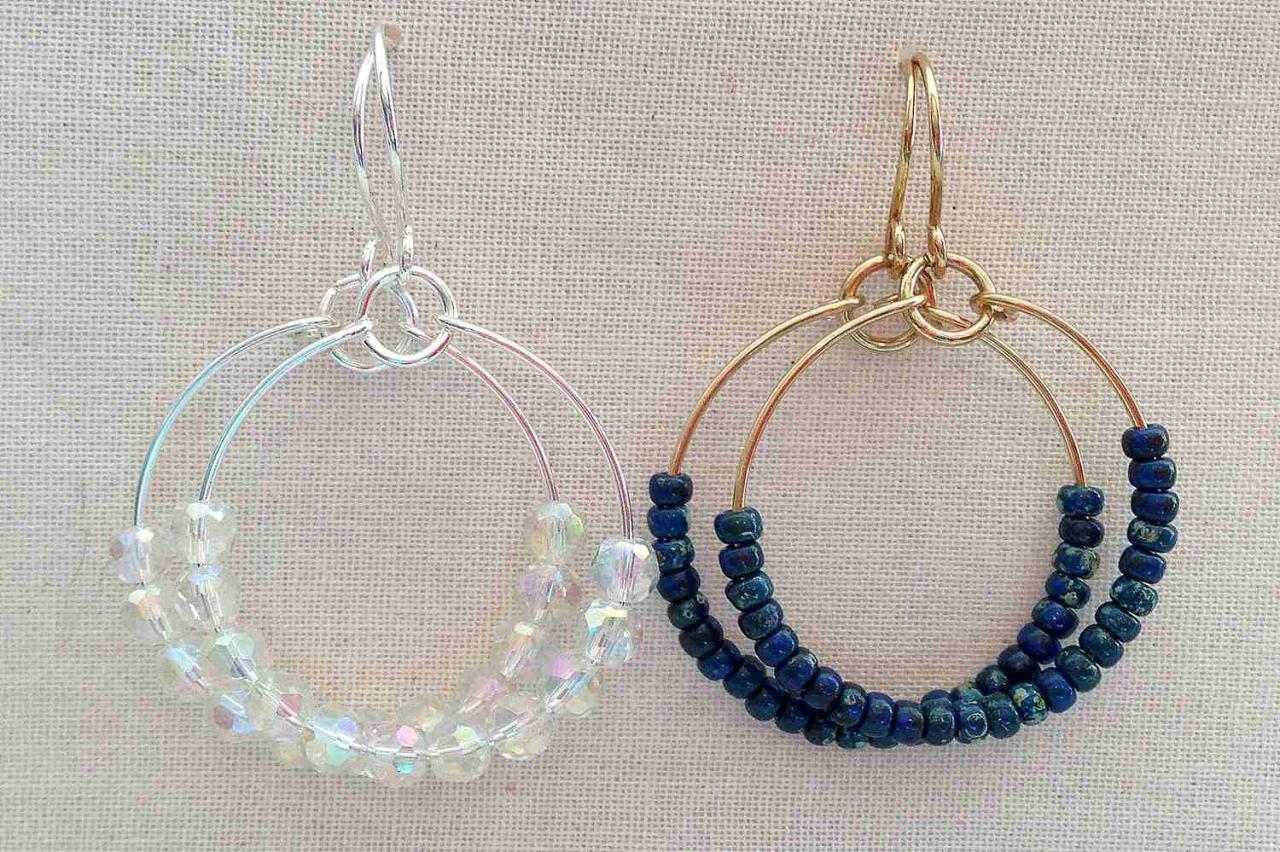
Earring making involves a variety of techniques that allow you to create unique and beautiful pieces. From simple wire wrapping to intricate soldering, each technique has its own set of tools and materials. This section explores some common techniques used in earring making and provides insights into the steps involved in creating different earring styles.
Wire Wrapping
Wire wrapping is a versatile technique used to create various earring styles, from simple studs to elaborate drops. It involves using wire to wrap around beads, stones, or other materials to create a secure and decorative setting.
Wire wrapping requires basic tools such as wire cutters, round-nose pliers, and flat-nose pliers. You can use different types of wire, including sterling silver, copper, and gold-filled wire. The gauge of the wire, which refers to its thickness, affects its strength and flexibility.
The process of wire wrapping typically involves:
* Cutting the wire: Use wire cutters to cut the wire to the desired length.
* Forming the wire: Use round-nose pliers to create loops or other shapes.
* Wrapping the wire: Wrap the wire around the bead or material, ensuring a secure hold.
* Finishing: Trim any excess wire and use flat-nose pliers to flatten the ends for a clean finish.
Beading
Beading is a popular technique for creating earrings, allowing for a wide range of designs and styles. Beads come in various materials, sizes, shapes, and colors, offering endless creative possibilities.
The process of beading typically involves:
* Choosing beads: Select beads that complement the desired earring style and design.
* Stringing beads: Use beading wire, thread, or string to string the beads together.
* Creating the earring design: Arrange the beads in a pattern or design to create the desired look.
* Attaching the findings: Use earring findings, such as ear wires or hooks, to attach the beaded design to the earring.
Soldering
Soldering is a technique used to join metal components together using a solder, a metal alloy with a lower melting point than the metals being joined. This technique is commonly used in earring making to create intricate designs and durable pieces.
The process of soldering typically involves:
* Preparing the metal components: Clean the metal surfaces to remove any dirt or impurities.
* Applying flux: Flux is a chemical that helps the solder flow smoothly and prevents oxidation.
* Heating the metal components: Use a soldering iron or torch to heat the metal components to the solder’s melting point.
* Applying solder: Apply the solder to the heated joint, allowing it to melt and flow into the gap.
* Cooling the metal components: Allow the metal components to cool slowly to ensure a strong bond.
Creating Different Earring Styles
The techniques discussed above can be combined to create various earring styles. Here’s a breakdown of the steps involved in creating common earring types:
Studs
Studs are simple and versatile earrings that consist of a small, flat base that is attached to the earlobe. They can be made using various techniques, including wire wrapping, beading, and soldering.
* Wire wrapping: Cut a small piece of wire and form a loop at one end. Wrap the wire around a bead or stone, creating a secure setting. Attach the loop to a stud finding.
* Beading: Use a small bead or stone and attach it to a stud finding.
* Soldering: Cut two small metal discs and solder them together, creating a base for the stud. Attach a stud finding to the base.
Drops
Drop earrings are longer than studs and hang from the earlobe. They can be created using various techniques, including wire wrapping, beading, and soldering.
* Wire wrapping: Wrap wire around beads, stones, or other materials to create a decorative design. Attach the design to a drop finding.
* Beading: String beads together to create a desired design. Attach the design to a drop finding.
* Soldering: Solder metal components together to create a unique design. Attach the design to a drop finding.
Hoops
Hoops are circular earrings that can be simple or elaborate. They are typically made from metal and can be created using various techniques, including wire wrapping and soldering.
* Wire wrapping: Cut a piece of wire and form a circle. Use wire wrapping techniques to add decorative elements to the hoop.
* Soldering: Cut a metal strip and form a circle. Solder the ends together, creating a hoop. Use soldering techniques to add decorative elements to the hoop.
Tools and Equipment
Several tools and equipment are essential for earring making. Here are some of the most common ones:
* Wire cutters: Used to cut wire to the desired length.
* Round-nose pliers: Used to form loops and curves in wire.
* Flat-nose pliers: Used to flatten wire ends and hold components securely.
* Beading wire: Used to string beads together.
* Beading needles: Used to thread beads onto wire or string.
* Earring findings: Include ear wires, hooks, studs, and drop findings.
* Soldering iron or torch: Used to heat metal components for soldering.
* Solder: A metal alloy used to join metal components.
* Flux: A chemical that helps the solder flow smoothly and prevents oxidation.
* Jeweler’s saw: Used to cut metal sheets and create intricate designs.
* Files: Used to smooth and shape metal components.
* Sandpaper: Used to polish and finish metal components.
* Work bench: Provides a stable surface for working on projects.
* Magnifying glass: Used to view small details during the earring making process.
Earring Making Safety and Precautions
Creating beautiful and unique earrings can be a rewarding experience. However, it is essential to prioritize safety throughout the earring-making process. This section Artikels crucial safety measures and precautions to ensure a safe and enjoyable crafting experience.
Safety Measures for Handling Sharp Objects
Working with sharp tools like cutters, pliers, and awls requires careful handling to prevent accidents.
- Always use sharp tools on a stable surface, preferably a cutting mat, to avoid slipping and accidental cuts.
- Keep your fingers away from the blades and cutting edges while working.
- Use a tool specifically designed for cutting wire, like wire cutters, to avoid damaging other tools.
- Store sharp tools safely in a designated container or drawer when not in use.
Safety Measures for Handling Chemicals, Making earrings
Earring making often involves using adhesives, resins, and other chemicals that can be harmful if not handled properly.
- Always wear gloves and eye protection when working with chemicals.
- Work in a well-ventilated area to avoid inhaling fumes.
- Follow the manufacturer’s instructions for safe handling and storage of chemicals.
- Keep chemicals away from children and pets.
- Avoid mixing chemicals unless instructed by the manufacturer.
Safety Measures for Handling Heat Sources
Using heat sources like soldering irons, torches, or heat guns requires extra caution to prevent burns and fire hazards.
- Always work on a heat-resistant surface, like a fireproof mat or a ceramic tile.
- Keep flammable materials like paper, cloth, or plastic away from the heat source.
- Use heat-resistant gloves and eye protection when working with hot tools.
- Ensure adequate ventilation to avoid inhaling fumes from heated materials.
- Never leave a heat source unattended when it is hot.
Importance of Proper Ventilation and Eye Protection
- Ensure adequate ventilation in your workspace, especially when working with chemicals, soldering, or using heat guns. This helps prevent inhaling harmful fumes and ensures good air quality.
- Always wear safety glasses or goggles to protect your eyes from flying debris, chemical splashes, or hot metal sparks.
- Regularly clean your workspace and tools to avoid accidents and maintain a safe environment.
Finishing and Polishing Techniques: Making Earrings
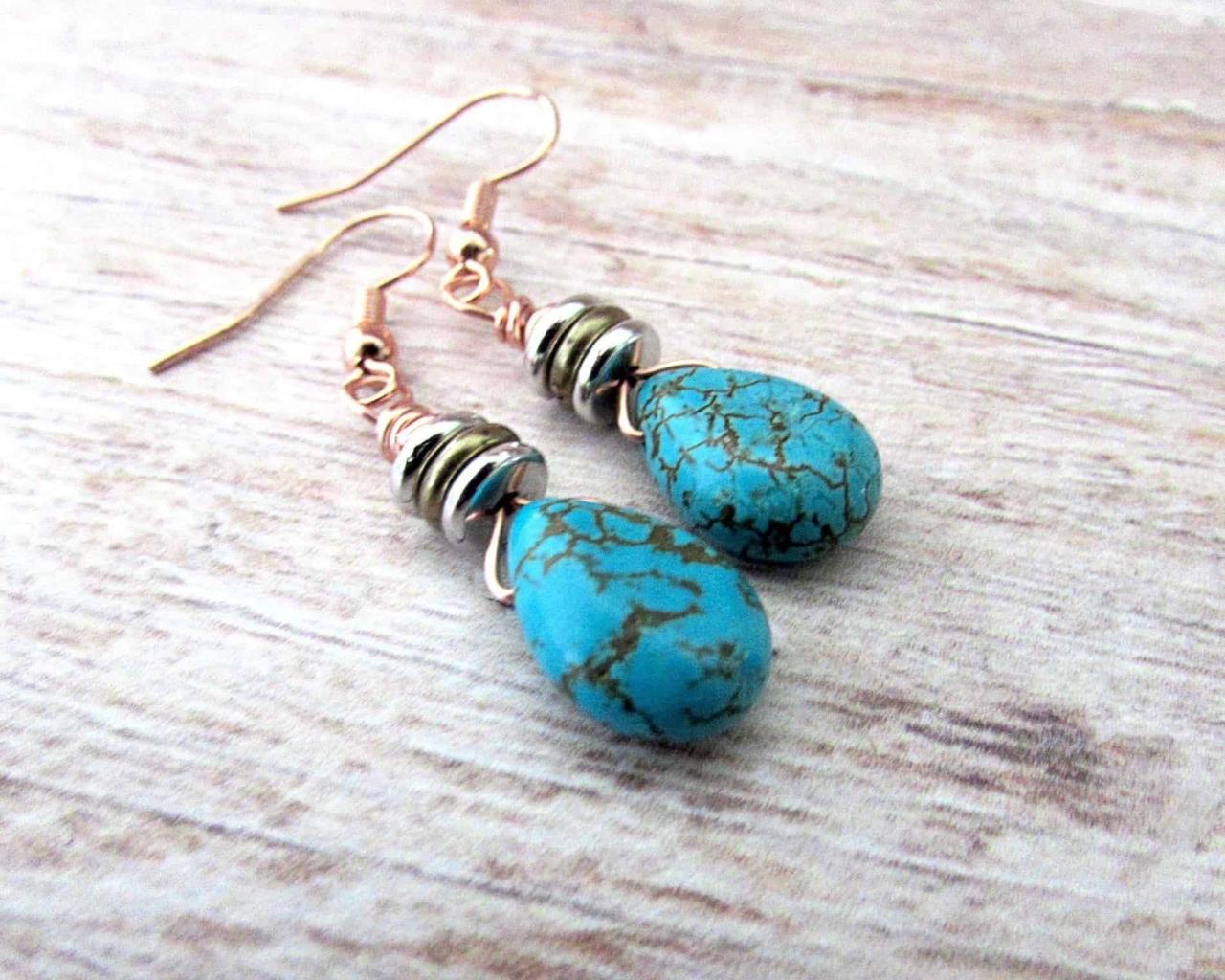
The final stage of earring making involves finishing and polishing techniques, which play a crucial role in enhancing the durability and aesthetic appeal of your creations. These techniques can transform raw metal or materials into polished and refined earrings, adding a professional touch to your work.
Sanding
Sanding is an essential step in smoothing out rough edges and imperfections on your earring pieces. It involves using sandpaper with varying grits to gradually remove surface irregularities and achieve a desired finish.
- Coarse Grit Sandpaper: Used for initial shaping and removing large imperfections.
- Medium Grit Sandpaper: Used for smoothing out the surface and removing scratches left by coarser sandpaper.
- Fine Grit Sandpaper: Used for achieving a smooth and polished finish.
Sanding should be done in a systematic manner, starting with coarser grits and gradually moving to finer grits to avoid uneven sanding and scratches.
Buffing
Buffing is a technique used to polish and shine metal surfaces, enhancing their luster and removing any remaining imperfections.
- Buffing Wheels: These are rotating wheels covered with various materials, such as felt, leather, or cotton, used with a buffing compound.
- Buffing Compounds: These are abrasive pastes or creams that are applied to the buffing wheel to remove surface imperfections and achieve a desired shine.
Buffing wheels come in different shapes and sizes to accommodate various earring designs and materials. The choice of buffing compound depends on the desired finish, with different compounds offering varying levels of abrasiveness and shine.
Plating
Plating is a process that involves coating the surface of an earring with a thin layer of another metal, enhancing its appearance, durability, and resistance to corrosion.
- Electroplating: A common method where the earring is submerged in an electrolytic solution containing the desired metal ions. An electric current is then passed through the solution, causing the metal ions to deposit onto the earring surface.
- Immersion Plating: A simpler method where the earring is immersed in a solution containing the desired metal ions. The metal ions react with the earring surface, forming a thin layer of plating.
Plating options include gold, silver, rhodium, and other metals, each offering distinct aesthetic and protective properties.
Achieving Different Finishes
Proper finishing techniques are crucial for achieving desired finishes, such as matte, glossy, and oxidized.
Matte Finish
A matte finish provides a subtle, non-reflective surface. It is achieved by sanding with fine-grit sandpaper and avoiding buffing.
Glossy Finish
A glossy finish creates a high-shine, reflective surface. It is achieved by buffing with a soft cloth or a buffing wheel and a polishing compound.
Oxidized Finish
An oxidized finish gives a dark, aged appearance. It is achieved by exposing the metal to a chemical solution that reacts with the surface, creating a patina.
Advanced Earring Making Techniques
Taking your earring making skills to the next level involves exploring more complex techniques and utilizing specialized tools and equipment. This section will delve into techniques like gemstone setting, metal stamping, and enamel work, which allow you to create intricate and detailed earring designs.
Gemstone Setting
Gemstone setting involves securing gemstones into jewelry pieces, adding a touch of brilliance and elegance. Different settings cater to various gemstone shapes and sizes, each requiring specific tools and techniques.
Here are some common gemstone settings:
- Prong Setting: This setting uses prongs, or small metal claws, to hold the gemstone in place. It offers a secure hold while showcasing the gemstone’s beauty.
- Bezel Setting: A bezel setting encircles the gemstone with a metal rim, offering a secure and elegant look.
- Channel Setting: In this setting, gemstones are placed in a channel created in the metal, creating a continuous line of stones.
- Flush Setting: A flush setting sits the gemstone flush with the surface of the metal, offering a sleek and minimalist look.
Metal Stamping
Metal stamping is a technique used to create designs on metal surfaces by using a hammer and a stamp. The process involves striking the stamp with a hammer, transferring the design onto the metal.
- Tools and Equipment:
- Stamping Hammer: A hammer specifically designed for stamping, featuring a rounded head to prevent damage to the metal.
- Metal Stamps: Stamps come in various sizes and designs, allowing for intricate patterns and personalized touches.
- Metal Block: A sturdy block used to support the metal while stamping, ensuring even pressure and preventing distortion.
- Techniques:
- Alignment: Precise alignment of the stamp is crucial for accurate and clean designs.
- Striking: The force of the hammer strike determines the depth and clarity of the design.
Enamel Work
Enamel work involves applying powdered glass to metal surfaces and then firing them in a kiln to create a durable and vibrant finish. This technique allows for intricate designs and color combinations.
- Types of Enamel:
- Cloisonné Enamel: This technique involves creating compartments on the metal surface using thin metal wires and filling them with enamel.
- Champlevé Enamel: In champlevé enamel, the design is carved into the metal surface, and the cavities are filled with enamel.
- Plique-à-jour Enamel: This technique involves creating a translucent enamel design without any metal backing.
- Process:
- Preparation: The metal surface is cleaned and prepared for enamel application.
- Enamel Application: Enamel powder is applied to the metal surface using a brush or spatula.
- Firing: The enameled piece is fired in a kiln at high temperatures, fusing the enamel to the metal.
Last Word
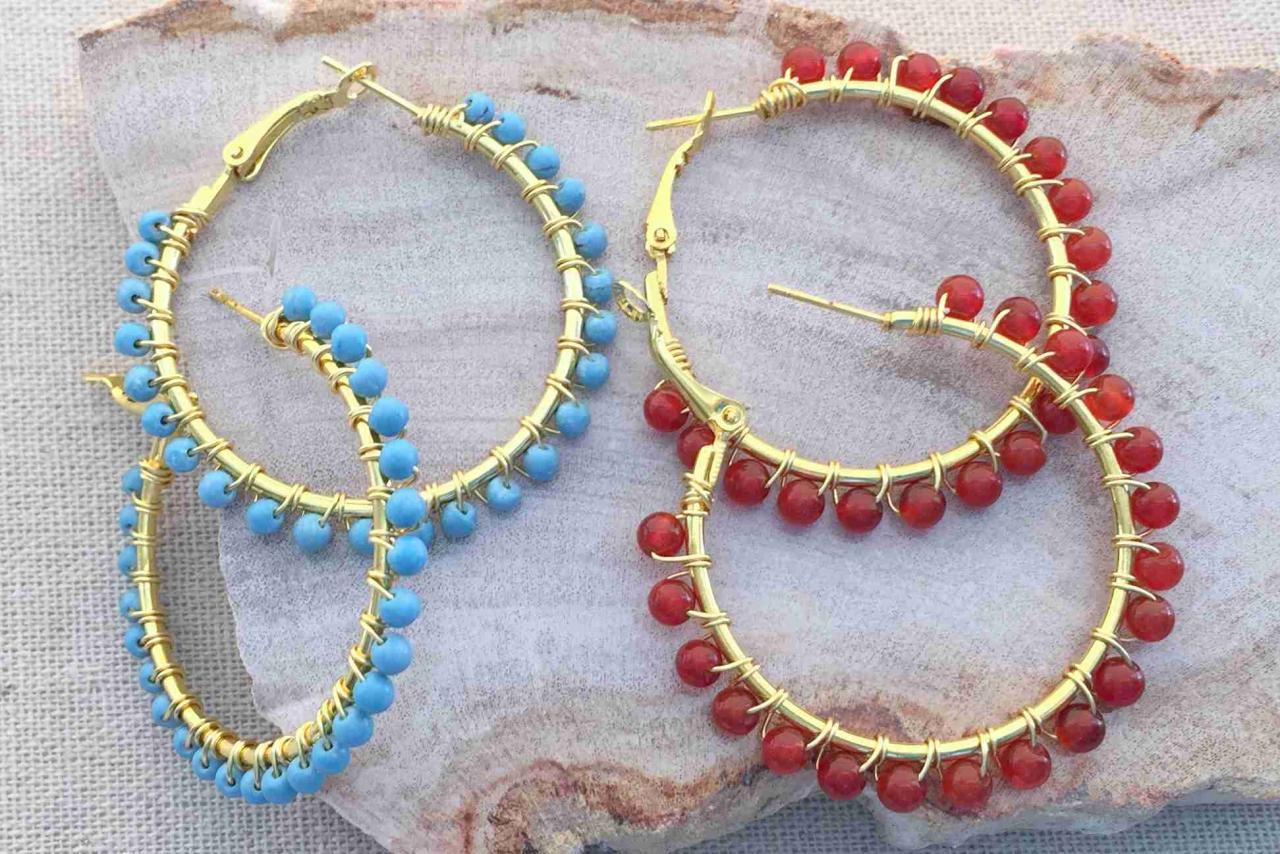
As you embark on your earring making journey, remember that the process is as rewarding as the final product. Embrace experimentation, explore different materials and techniques, and allow your creativity to flourish. The world of earring making is a vast and ever-evolving landscape, offering endless possibilities for self-expression and artistic exploration. So, gather your tools, unleash your imagination, and create earrings that reflect your personal style and captivate the world.
Making earrings can be a fun and rewarding way to express your personal style. You can create unique pieces that reflect your taste and personality, and it’s a great way to add a touch of individuality to your wardrobe.
If you’re looking for more festive crafting projects, you might enjoy checking out Make Your Own Christmas Decorations: DIY Joy for the Holidays. This website offers a range of ideas for crafting unique and beautiful Christmas decorations.
And once you’ve mastered the art of making earrings, you can even use your skills to create custom ornaments for your holiday tree!

